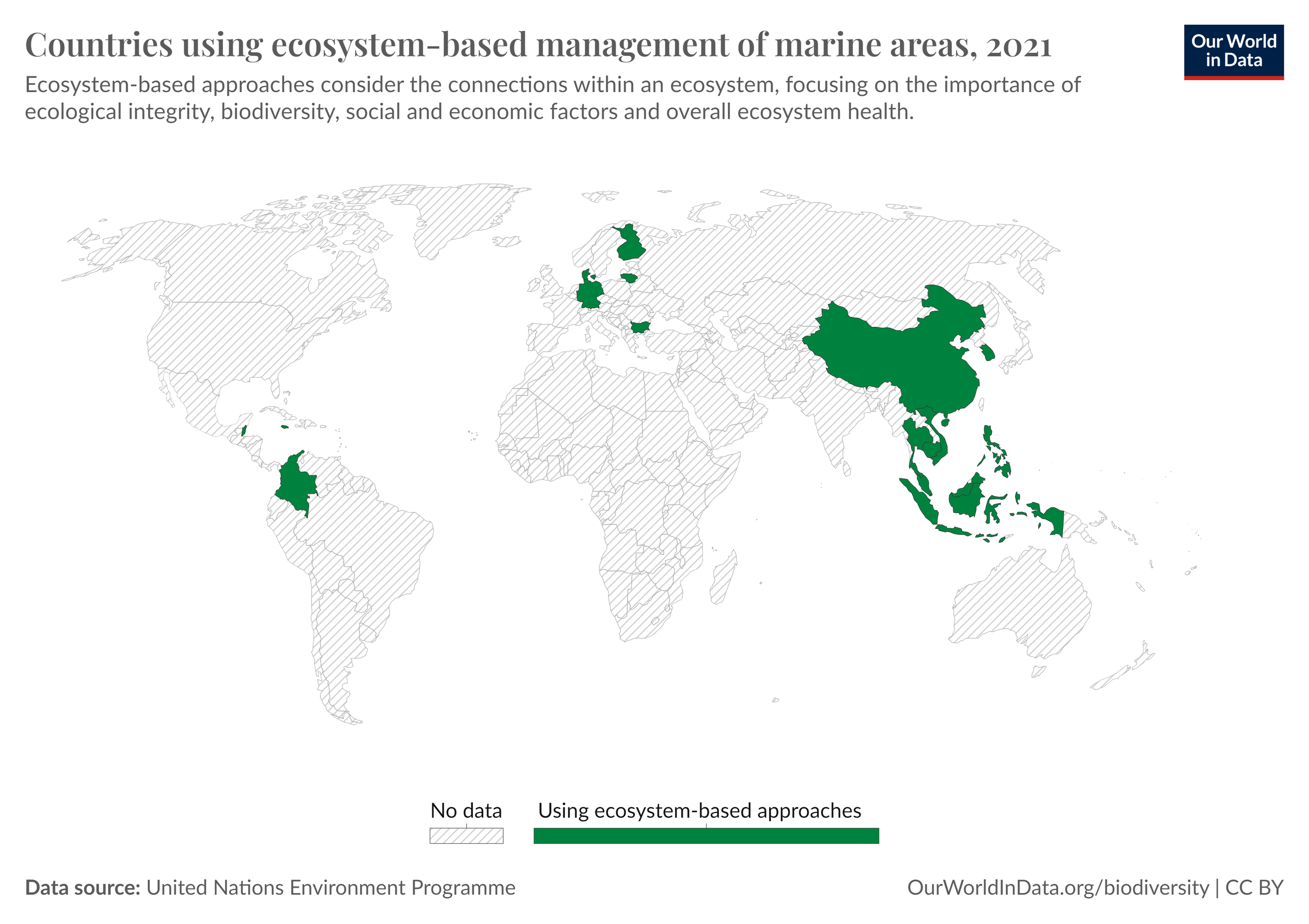SDG #15 is to “Protect, restore and promote sustainable use of terrestrial ecosystems, sustainably manage forests, combat desertification, and halt and reverse land degradation and halt biodiversity loss”
Within SDG #15 are 12 targets, of which we here focus on Target 15.1:
By 2020, ensure the conservation, restoration and sustainable use of terrestrial and inland freshwater ecosystems and their services, in particular forests, wetlands, mountains and drylands, in line with obligations under international agreements
Target 15.1 has two indicators:
Indicator 15.1.1: Forest area as a proportion of total land area
Indicator 15.1.2: Proportion of important sites for terrestrial and freshwater biodiversity that are covered by protected areas, by ecosystem type
This target is the sister goal of Target 14.2. In this instance, the target focused on terrestrial and freshwater biodiversity, in contrast to marine life. According to the World Database on Protected Areas, as of 2024, there are 293,704 protected areas, both on land and at sea.
This target states a 2020 aim. This was in line with the Aichi Biodiversity Targets and Strategic Plan for Biodiversity 2011-2020. The targets and strategic plan were part of the Convention on Biological Diversity. Since 2020, a new agreement, the Kunming-Montreal Global Biodiversity Framework, succeeded these. This new framework provides a vision through to the end of the SDG period, and beyond to mid-century.
The countries with greater than 90% area of forest as a proportion of all land are Gabon and Equatorial Guinea. Other examples of countries with smaller populations are the Guianas, the Solomon Islands and Palau.
The region with the least is the drylands band across the Sahara and Horn of Africa, through to the Middle East and Central Asia.
The global share of forest cover on land in 2020 was 31%, unchanged since the adoption of the Goals in 2015.
The archipelago of Seychelles has the highest proportion of protected land as of 2022, with 61%, followed by Venezuela. As of 2021, 15% of Earth’s land was a protected area. Countries protecting the highest percentage of land categorised as key biodiversity areas as of 2022 include:
a dozen in Europe
Namibia
Zimbabwe
Equatorial Guinea
the Guianas.
Worldwide, this share was 44% in 2022, little changed since 2015. Similar regions have protected key biodiversity areas in freshwater ecosystems. The world also has a 44% share of protection of freshwater key biodiversity areas.












































